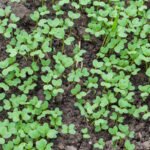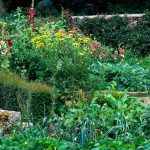Looking to start an indoor garden? Whether you’re a city dweller without outdoor space or simply want to enjoy fresh produce year-round, indoor gardening can be a great solution. In this article, we’ll explore the best vegetables for indoor gardening, providing tips and tricks for growing your own produce in the comfort of your home. From tomatoes to herbs, you’ll discover the top veggies that thrive in indoor environments.
Indoor gardening allows you to grow your favorite vegetables regardless of the season or climate. By utilizing containers, shelves, and even hydroponic systems, it’s possible to cultivate a wide variety of crops indoors. Not only is indoor gardening convenient, but it also offers numerous benefits such as access to fresh produce, improved air quality, and the opportunity for relaxation and stress relief.
When it comes to successful indoor gardening, there are several important factors to consider. From light and temperature requirements to container size and soil composition, understanding these key elements will help ensure the success of your indoor garden. With careful planning and attention to detail, you can create a thriving vegetable garden right in your own home.
Benefits of Indoor Gardening
Indoor gardening offers numerous benefits, making it an attractive option for those looking to grow their own vegetables. One of the main benefits is the ability to garden year-round regardless of the weather outside. Additionally, indoor gardening allows for better control over various factors such as temperature, humidity, and pests, leading to healthier and more successful plant growth.
Another benefit of indoor gardening is the convenience it provides. With vegetables readily available at your fingertips, there’s no need to make a trip to the grocery store whenever you need fresh produce. This can save both time and money in the long run. Additionally, indoor gardening can be a therapeutic and stress-relieving activity, offering a sense of accomplishment and pride as you watch your vegetables grow from seedlings into fully mature plants.
Furthermore, indoor gardening promotes sustainability by reducing food miles associated with store-bought produce. Growing your own vegetables also allows for better control over growing methods, ensuring that no harmful chemicals or pesticides are used during the process. Overall, indoor gardening not only provides access to fresh and organic vegetables but also contributes to a more sustainable lifestyle.
- Year-round gardening
- Control over growing conditions
- Convenience and cost-saving
- Therapeutic benefits
- Promotes sustainability
Factors to Consider for Indoor Gardening Success
When it comes to indoor gardening, there are a few key factors to consider in order to achieve success. Here are some important tips to keep in mind:
1. Light: One of the most important factors for indoor gardening is providing the right amount of light for your plants. Most vegetables need at least 6-8 hours of direct sunlight each day. If you don’t have access to natural sunlight, you can use grow lights to ensure your plants get the light they need to thrive.
2. Temperature and Humidity: Vegetables grown indoors require a consistent temperature and humidity level. It’s important to keep your indoor space well-ventilated and at the right temperature for the specific vegetables you are growing. Additionally, some vegetables may benefit from a humidifier if your indoor environment is too dry.
3. Space and Containers: Consider the space you have available for indoor gardening and choose containers that will accommodate the size of the plants you want to grow. Some vegetables, like tomatoes and peppers, require larger containers with good drainage, while smaller vegetables like lettuce and herbs can be grown in smaller pots or even window boxes.
By considering these factors, you can create an ideal environment for growing the best vegetables for indoor gardening. With proper lighting, temperature control, and suitable containers, you can enjoy a thriving indoor vegetable garden all year round.
Best Vegetables for Indoor Gardening
When it comes to indoor gardening, one of the most popular vegetables to grow is tomatoes. Tomatoes are not only delicious and versatile in the kitchen, but they also thrive in indoor environments when given the right conditions. One of the key factors to consider when growing tomatoes indoors is providing them with plenty of light. Tomatoes require at least 6-8 hours of direct sunlight or high-quality artificial light each day to produce healthy and abundant fruit.
Another important factor for successfully growing tomatoes indoors is choosing the right variety. Compact and determinate varieties like cherry or patio tomatoes are excellent choices for indoor gardening as they don’t require as much space and tend to produce a high yield in limited areas. It’s essential to provide proper support for tomato plants, such as stakes or cages, to keep them upright as they grow and develop fruit.
In addition, proper watering and fertilization are crucial for indoor tomato plants. It’s important to water consistently, keeping the soil evenly moist but not waterlogged. Using a balanced fertilizer specifically formulated for tomatoes will ensure that the plants receive the nutrients they need to thrive and produce tasty fruits. Overall, with the right care and attention to detail, tomatoes can be among the best vegetables for indoor gardening, providing a bountiful harvest right in your own home.
Best Vegetables for Indoor Gardening
When it comes to indoor gardening, lettuce and leafy greens are some of the best vegetables to grow. Not only are they relatively easy to cultivate indoors, but they also provide a continuous harvest of fresh, nutritious produce. In this section, we will explore the benefits of growing lettuce and leafy greens indoors, as well as some tips for successfully cultivating these vegetables in a controlled environment.
Benefits of Growing Lettuce and Leafy Greens Indoors
One of the main advantages of growing lettuce and leafy greens indoors is the ability to have a year-round supply of fresh produce. With proper care and attention, these vegetables can be grown indoors regardless of the season, allowing you to enjoy homegrown salads and smoothie ingredients at any time. Additionally, growing lettuce and leafy greens indoors reduces the risk of exposure to outdoor pests and harsh weather conditions, providing a more controlled environment for optimal growth.
Tips for Successfully Growing Lettuce and Leafy Greens Indoors
To successfully grow lettuce and leafy greens indoors, it’s important to provide the right conditions for these vegetables to thrive. Choosing a well-lit area with access to natural sunlight or artificial grow lights is crucial for healthy growth. Additionally, ensuring proper air circulation and maintaining adequate humidity levels will contribute to better yields.
When selecting varieties for indoor cultivation, consider options that are well-suited for container gardening and compact spaces. By following these tips, you can enjoy a bountiful harvest of fresh lettuce and leafy greens from your indoor garden.
Best Vegetables for Indoor Gardening
Peppers are an excellent choice for indoor gardening due to their relatively compact size and ability to thrive in containers. They also add a pop of color and flavor to any dish, making them a popular choice for indoor gardeners. Whether you like them hot or sweet, there are plenty of pepper varieties that can be grown indoors.
One of the best things about growing peppers indoors is that they don’t require a lot of space. Compact pepper plants, such as mini bell peppers or chili peppers, can easily be grown in small pots or containers on a sunny windowsill. With the right care and attention, indoor-grown peppers can produce just as much fruit as their outdoor counterparts.
When it comes to choosing the best peppers for indoor gardening, consider varieties that are well-suited for container growth and have a shorter growing season. Some recommended pepper varieties for indoor gardening include jalapenos, cherry peppers, bell peppers, and mini sweet peppers. These varieties tend to be more compact and can thrive in the limited space of an indoor garden.
To ensure successful growth of indoor-grown peppers, provide them with ample sunlight, sufficient watering, and well-draining soil. Additionally, consider using grow lights to supplement natural light if your indoor space doesn’t receive enough sunlight.
With the right care and attention, you can enjoy a bountiful harvest of delicious homegrown peppers right from your own kitchen. The best vegetables for indoor gardening definitely include flavorful and colorful peppers that can enhance your culinary creations while adding beauty to your indoor space.
Best Vegetables for Indoor Gardening
When it comes to indoor gardening, carrots and radishes are two of the best vegetables to grow. These root vegetables are not only delicious and nutritious, but they also thrive in indoor environments with the right conditions. In this section, we will explore the benefits of growing carrots and radishes indoors, as well as some tips for successfully cultivating these crops.
Benefits of Growing Carrots and Radishes Indoors
Carrots and radishes are ideal for indoor gardening because they do not require a lot of space to grow. This makes them perfect for apartment dwellers or anyone with limited outdoor space. Additionally, these root vegetables have relatively short growing seasons, which means you can enjoy a bountiful harvest in a relatively short amount of time. Both carrots and radishes are also high in vitamins and antioxidants, making them a healthy addition to any diet.
Tips for Successfully Growing Carrots and Radishes Indoors
To successfully grow carrots and radishes indoors, it is important to provide the right conditions for these crops. Both vegetables thrive in well-drained soil with plenty of organic matter. Ensure that your containers or raised beds have enough depth for the root vegetables to develop properly.
Additionally, make sure they receive adequate sunlight or artificial light if natural light is limited. Finally, be mindful of watering practices, as carrots and radishes prefer consistently moist soil but can rot if overwatered.
Best Vegetables for Indoor Gardening
Herbs are some of the best vegetables for indoor gardening due to their compact size, minimal maintenance, and versatility in cooking. With the right conditions, they can thrive indoors and provide a fresh supply of herbs for your culinary creations.
Popular herbs that are well-suited for indoor gardening include basil, mint, parsley, cilantro, and chives. These herbs grow well in small containers and only require adequate sunlight and regular watering to flourish. They can be grown individually or grouped together in a larger pot to create a mini herb garden within your home.
One of the key benefits of growing herbs indoors is the convenience of having fresh herbs at your fingertips year-round. Whether you’re adding basil to a homemade pizza or garnishing a dish with freshly chopped cilantro, having access to these flavorful herbs can elevate your cooking experience. Additionally, growing your own herbs indoors can also save money compared to purchasing them from the store every time you need them.
When choosing herbs for indoor gardening, consider the amount of sunlight they require and select a location in your home that receives adequate light throughout the day. Some herbs may thrive in a sunny window while others may prefer partial shade. By understanding the specific needs of each herb and providing them with proper care, you can successfully grow a variety of flavorful herbs in your indoor garden.
Tips for Growing Vegetables Indoors Successfully
When it comes to growing vegetables indoors, there are a few key tips to keep in mind for successful cultivation. One of the most important factors to consider is light. Since indoor environments may not have access to as much natural sunlight as outdoor spaces, it’s crucial to provide supplementary light sources for your vegetables. LED grow lights are often recommended as they can mimic the full spectrum of sunlight necessary for plant growth.
In addition to adequate lighting, proper watering is essential for indoor vegetable gardening. Since indoor environments tend to have lower humidity levels, it’s important to monitor soil moisture and water your plants regularly. However, it’s equally important not to overwater your vegetables, as this can lead to root rot and other issues.
Another important consideration for successful indoor vegetable gardening is the selection of the right containers and soil. Choose pots or containers that provide good drainage to prevent waterlogging, and use a high-quality potting mix that is well aerated and nutrient-rich. This will ensure that your vegetables have a healthy growing environment and are less susceptible to diseases.
By following these tips and considering these factors, you can create an ideal environment for growing the best vegetables for indoor gardening. With the right knowledge and care, you can enjoy a bountiful indoor vegetable garden no matter the time of year or weather conditions outside.
Conclusion and Final Thoughts on Indoor Vegetable Gardening
In conclusion, indoor vegetable gardening offers a variety of benefits and can be a rewarding experience for home gardeners. The convenience of having fresh produce right at your fingertips, the ability to grow year-round, and the opportunity to have more control over the growing conditions are just a few of the advantages. With the right factors considered and proper care taken, indoor gardening can be a successful endeavor.
When it comes to choosing the best vegetables for indoor gardening, tomatoes, lettuce, leafy greens, peppers, carrots, radishes, and herbs are some of the top choices. These vegetables not only thrive in indoor environments but also provide an abundance of flavors and nutrients for you to enjoy. Whether you have limited outdoor space or simply want to expand your gardening efforts indoors, these vegetables are sure to satisfy your green thumb.
To ensure success with indoor vegetable gardening, remember to consider factors such as light availability, temperature control, soil quality, and proper watering techniques. Additionally, following expert tips for growing vegetables indoors can help you maximize your harvest and achieve the best results. With dedication and attention to detail, you can create a thriving indoor garden filled with an array of delicious and nutritious vegetables. Happy gardening.
Frequently Asked Questions
Can I Grow Vegetables Indoors Year Round?
Yes, you can grow vegetables indoors year round with the right setup. Indoor gardening allows for control over temperature, lighting, and humidity, creating a suitable environment for vegetable growth regardless of the season.
What Vegetables Should I Start Indoors?
Some vegetables that are commonly started indoors include tomatoes, peppers, eggplants, and herbs like basil and parsley. These plants benefit from a head start indoors before being transplanted outside once the weather warms up.
What Vegetables Can I Grow Indoors With Grow Lights?
Vegetables that can be grown indoors with grow lights include leafy greens like lettuce, spinach, and kale, as well as some root vegetables like carrots and radishes. Grow lights help provide the necessary light spectrum for photosynthesis and plant growth in indoor environments.

If you’re looking to get into vegetable gardening, or are just looking for some tips on how to make your current garden better, then you’ve come to the right place! My name is Ethel and I have been gardening for years. In this blog, I’m going to share with you some of my best tips on how to create a successful vegetable garden.





